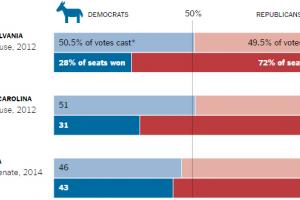Is the Partisan Gerrymander on the Road to Extinction?
Yes! Magazine
 How to Help - Harvey Relief, Texas AFL-CIO, Not Red Cross, Organizations on the Ground that Need Help; Problems with Outlook; Reader Comments: Racism, Hatred, Slavery, Those Monuments; Populist Victory in Birmingham, AL; Building Today's Socialist Movement, DSA; California Hate Crime Tracker; 4,000 Rabbis Berate Trump; Announcements - Voting and Partisan Gerrymandering; Chicago Alliance Against Racist and Political Repression; MEDICC 20th Anniversary Conference in Cuba
How to Help - Harvey Relief, Texas AFL-CIO, Not Red Cross, Organizations on the Ground that Need Help; Problems with Outlook; Reader Comments: Racism, Hatred, Slavery, Those Monuments; Populist Victory in Birmingham, AL; Building Today's Socialist Movement, DSA; California Hate Crime Tracker; 4,000 Rabbis Berate Trump; Announcements - Voting and Partisan Gerrymandering; Chicago Alliance Against Racist and Political Repression; MEDICC 20th Anniversary Conference in Cuba
 To gauge where this type of gerrymandering is taking place and its magnitude, this report used election results [from 2012, 2014, and 2016] in states with six or more congressional districts to assess the extent and the durability of “partisan bias” — the degree of systematic advantage one party receives over another in turning votes into seats . . . It also looked at the relationship between the body that drew the maps and the degree of bias observed.
To gauge where this type of gerrymandering is taking place and its magnitude, this report used election results [from 2012, 2014, and 2016] in states with six or more congressional districts to assess the extent and the durability of “partisan bias” — the degree of systematic advantage one party receives over another in turning votes into seats . . . It also looked at the relationship between the body that drew the maps and the degree of bias observed.
Spread the word